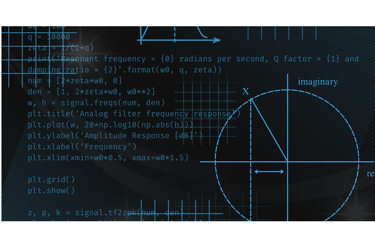Contextualizing Q Factor

Quality factor, or Q factor, is a common shorthand figure of merit (FOM) for RF filters. It’s typically expressed as the ratio of stored versus lost energy per oscillation cycle. Steepness of skirts, selectivity, and insertion loss are all specifications that can be described in terms of Q factor. While this FOM feels ubiquitous in RF, truly understanding how Q factor is determined and how it relates to other specifications is a complex endeavor because it’s contextual.
Pole Q factor is a particularly abstract context. Here, we look at poles and zeros in the complex plane. In theory, by moving the poles and zeros on the frequency axis, the slope gets steeper or shallower, impacting the sharpness of the filter. In practice, you can place zeros near frequencies you’d like to reject and poles near frequencies you’d like to pass. Ultimately, moving poles and zeros around on the plot crystallizes the filter response into the right shape for the customer.
Using our Python Scipy.signal Toolbox, we explored this and the theory behind poles and zeros.
Get unlimited access to:
Enter your credentials below to log in. Not yet a member of RF Globalnet? Subscribe today.
